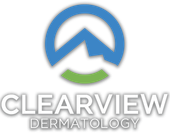Expert Benign Lesion Removal in Arvada, Colorado
Remove unwanted moles, skin tags, and other benign skin growths safely and effectively at Clearview Dermatology. Our board-certified dermatologists and expert providers specialize in safely and precisely removing a variety of benign lesions while ensuring minimal scarring and optimal cosmetic results. Whether you're dealing with bothersome moles, irritating skin tags, seborrheic keratoses, or other unwanted growths, we provide expert care and guidance throughout your journey to healthier, clearer skin across our Arvada, Evergreen, and Littleton locations.
Most people develop various skin growths throughout their lives, and while the vast majority are completely harmless, they can sometimes cause discomfort, irritation, or cosmetic concerns that affect your confidence. The good news is that modern removal techniques allow us to eliminate these growths safely and effectively, often with minimal scarring and quick recovery times.
What many patients appreciate is that benign lesion removal is typically a straightforward process that can be completed during a single office visit. Whether you have one bothersome growth or several areas of concern, we can often address multiple lesions during the same appointment, making the process convenient and efficient.
Understanding Common Types of Benign Lesions
Moles, also known as nevi, are among the most common skin growths we treat. These can vary significantly in size, shape, and color, ranging from small, flat brown spots to larger, raised growths. While most moles are completely harmless, some patients choose to have them removed for cosmetic reasons, especially if they're in visible areas or get caught on clothing or jewelry. We also recommend removal if a mole exhibits changes in size, shape, color, or texture over time.
Skin tags are those small, soft growths that often appear in areas where skin rubs against skin or clothing, such as the neck, underarms, or groin area. While skin tags are typically painless, they can become irritated or caught on clothing, making them bothersome in daily life. Many patients find them cosmetically unappealing, especially when they develop in visible areas like the neck or face.
Seborrheic keratoses are those raised, waxy, and often pigmented growths that tend to become more common as we age. They often appear on the face, chest, back, or other sun-exposed areas and can sometimes be mistaken for moles or even skin cancer. While they're completely benign, many patients choose to have them removed because they can be itchy, irritating, or simply unsightly.
We also commonly treat other benign growths, including dermatofibromas, lipomas, epidermal inclusion cysts, cherry angiomas, and various other skin lesions that patients find bothersome or concerning. Each type of lesion may require a different removal approach, which is why proper evaluation and diagnosis are so important.
Our Comprehensive Approach to Lesion Removal
Every skin growth is a little different, so when you come in to see us, we'll take a careful look at what you're dealing with before recommending any treatment. Our team has seen all kinds of moles, skin tags, and other growths, so we can usually tell you right away what we're looking at and the best way to remove it. We want you to feel comfortable throughout the whole process, so we'll explain your options and choose the gentlest approach that will still get you the results you want. Sometimes that means a quick snip with scissors, other times we might use a laser or freezing - it all depends on what will work best for your particular situation.
During your consultation, we'll examine your skin growth carefully, discuss your concerns and goals, review your medical history, and explain the most suitable removal options for your particular situation. Sometimes we'll take photographs to document the lesion before treatment, and we'll always provide detailed information about what to expect during and after the procedure.
Advanced Removal Techniques and Technologies
We have several different ways to remove skin growths, and we pick the method that makes the most sense for what you have and where it's located. For raised bumps and moles, we often use a technique called shave excision - basically using a special blade to carefully slice off the growth right at skin level. This works great for most raised lesions and usually heals with very little scarring, which is why we like it for spots on your face or other visible areas.
Electrocautery is another option where we use a tiny electrical current to burn off the growth. This works really well for skin tags and those waxy, crusty spots called seborrheic keratoses. The nice thing about this method is that it stops any bleeding right away and gives us really good control over exactly how much tissue we remove.
Sometimes we'll freeze a growth off using liquid nitrogen - we call this cryotherapy. The cold kills the abnormal cells, and over the next week or two, the growth just falls off on its own. Patients like this option because there's no cutting involved, and it works particularly well for those brown, warty-looking growths that tend to show up as we get older.
For certain growths, especially in areas where scarring is a big concern, we might use laser treatment to essentially vaporize the unwanted tissue. Lasers give us incredible precision and tend to promote really nice healing with minimal scarring.
If we need to remove the entire growth and want to have it examined under a microscope to make sure it's nothing to worry about, we'll do a complete surgical removal. This involves cutting out the whole lesion and stitching the skin back together. While this leaves a small scar, it ensures we get everything and gives us tissue to send to the lab for confirmation that it's benign.
What to Expect During Your Treatment Experience
Your benign lesion removal experience begins with a comprehensive consultation where we evaluate your specific concerns and recommend the most appropriate treatment approach. Most removal procedures can be performed right in our comfortable office setting using local anesthesia to ensure your comfort throughout the process.
The removal itself is quick - often just a few minutes unless we're taking off several growths at once. Afterward, we'll give you clear instructions on how to care for the area while it heals, which is important for getting the best results and avoiding any problems. Most people can return to their regular routine, though if we've done something more involved or in an area that moves a lot, we might suggest taking it easy for a day or so.
We like to keep an eye on how things are healing, so we'll have you come back to check on your progress. If we put in any stitches, we'll take those out at the follow-up visit. It's also a good time for you to ask any questions about how the healing is going. If we sent tissue to the lab for testing, we'll go over those results with you to confirm that everything looked normal under the microscope.
The Benefits of Professional Lesion Removal
Choosing professional lesion removal at Clearview Dermatology offers numerous advantages over attempting home remedies or waiting for growths to resolve on their own. Our board-certified dermatologists have the expertise to properly diagnose lesions and determine the most appropriate removal technique for optimal cosmetic and medical outcomes.
When you have growths removed professionally, we can make sure everything heals properly and catch any problems early if they come up. This helps prevent issues like infections or scars that are bigger than they need to be. Plus, if there's any question about what we removed, we can send it to the lab and give you the reassurance that comes with knowing for certain that it was nothing to worry about.
Frequently Asked Questions
Will lesion removal leave scars?
Our advanced techniques are designed to minimize scarring. Most removal methods result in minimal visible scarring, especially when proper aftercare instructions are followed.
Is the removal process painful?
We use local anesthesia to ensure your comfort during the procedure. Most patients experience minimal discomfort that resolves quickly after treatment.
How long does healing take?
Healing time varies depending on the removal method and location, but most patients see complete healing within one to two weeks.

Contact Clearview Dermatology
Ready to remove unwanted skin growths safely and effectively? Contact Clearview Dermatology today to schedule your benign lesion removal consultation and experience the peace of mind that comes with expert dermatologic care.





